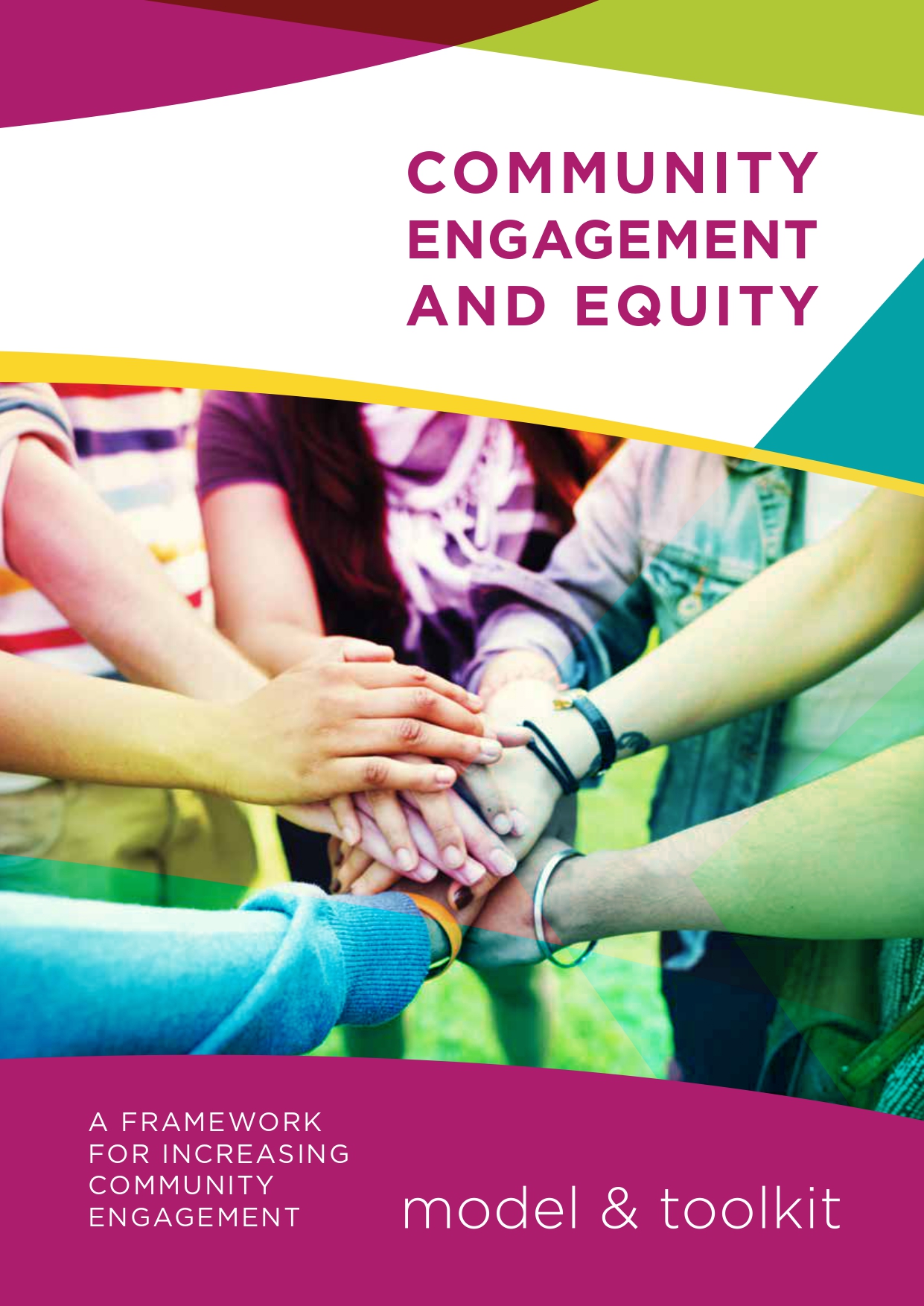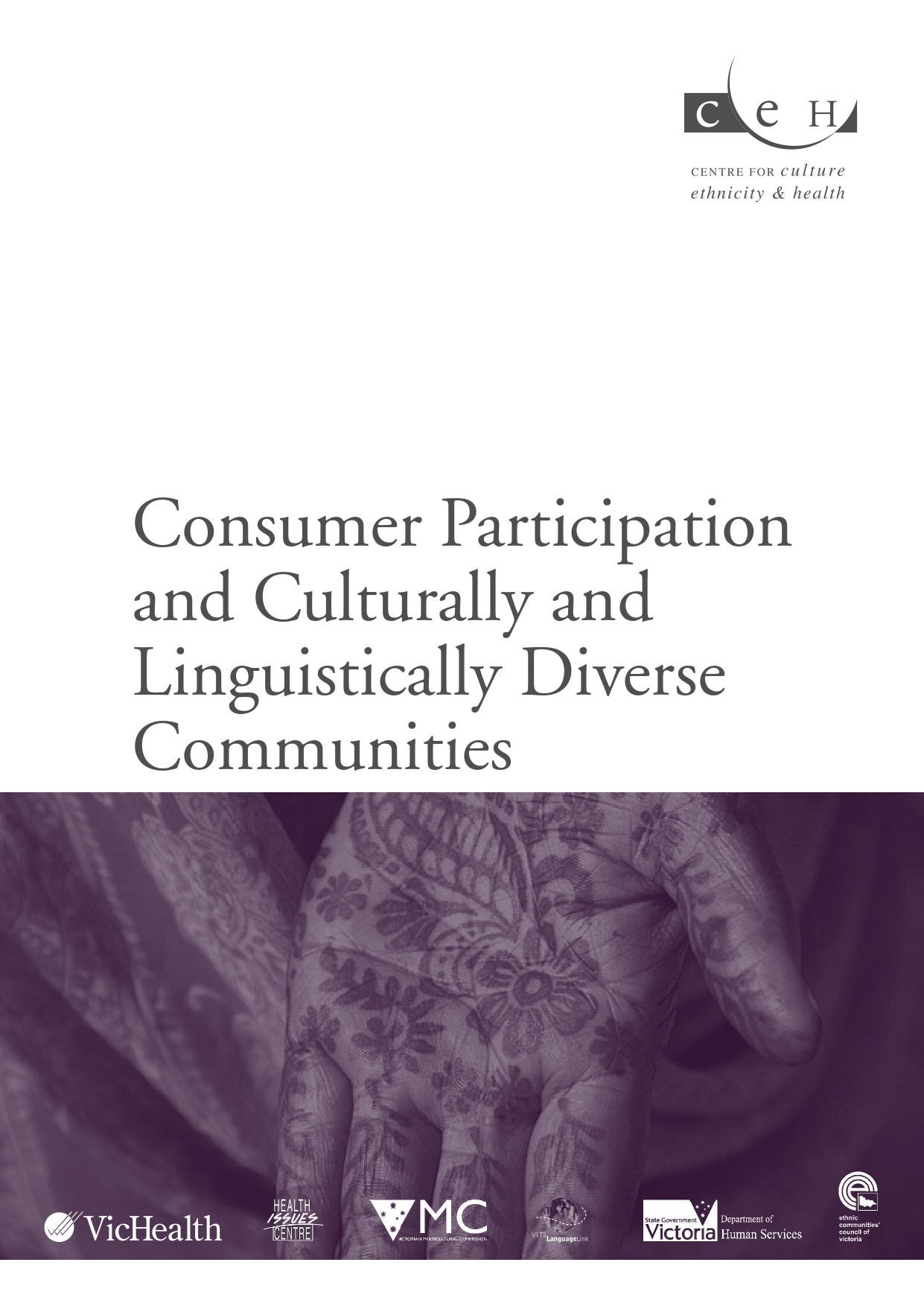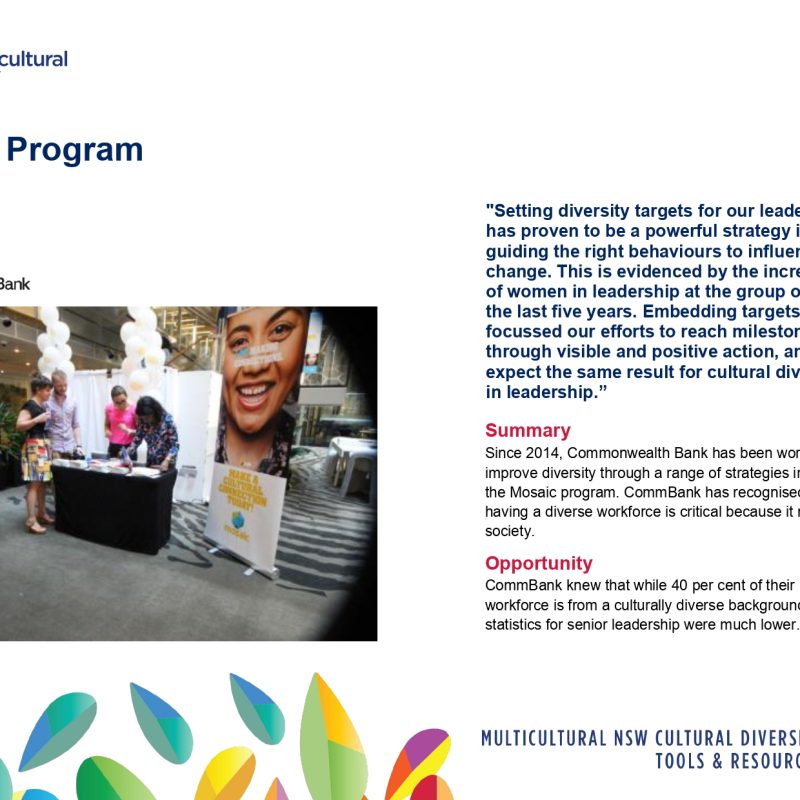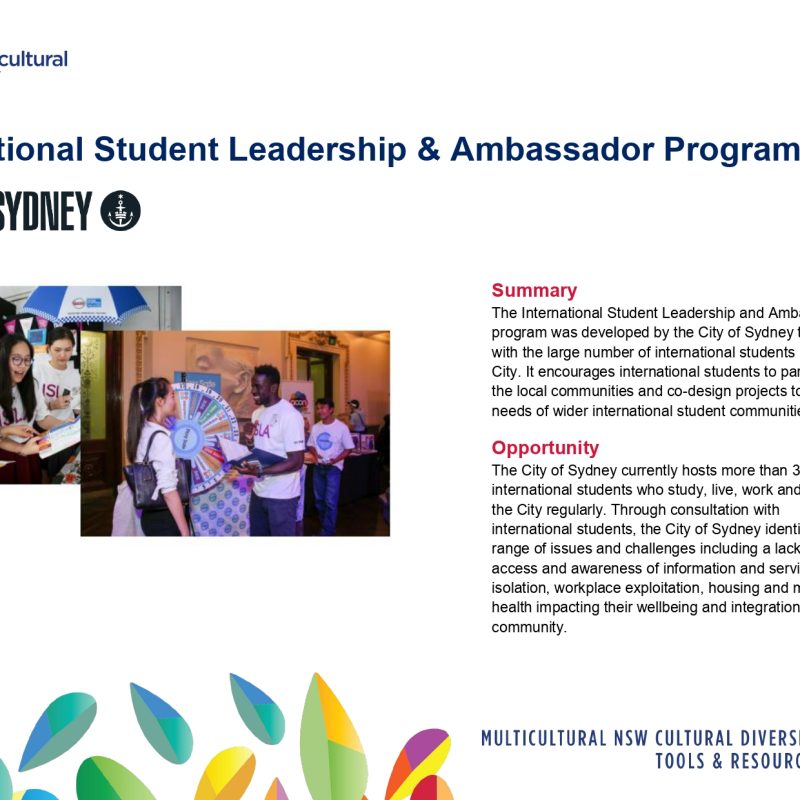Consumer Participation and Culturally and Linguistically Diverse Communities
This document provides a framework and practical case studies to guide organizations in effectively engaging CALD consumers in the planning, delivery, and evaluation of health and community services.
Download
This document, “Consumer Participation and Culturally and Linguistically Diverse Communities”, focuses on effective engagement strategies for culturally and linguistically diverse (CALD) consumers in health and community services in Victoria, Australia. It emphasizes the importance of organizational commitment, cultural sensitivity, and meaningful participation in creating services that meet the needs of diverse communities.
The document stems from a conference held by the Centre for Culture Ethnicity & Health (CEH) in 2005, with contributions from various stakeholders:
- Health and community workers with experience in CALD consumer participation
- Representatives from community health, ethnic community organizations, migrant settlement services, and local government
- CALD consumers
Organizations can use this document to engage multicultural communities by:
- Building Organizational Capacity: Organizations should clearly define their goals for consumer participation, identify their CALD consumer base, and assess their capacity to support consumer-driven initiatives. This involves:
- Mapping existing CALD consumer participation efforts
- Training staff in cultural awareness and engagement methods
- Establishing ongoing partnerships with ethno-specific organizations
- Ensuring Cultural and Linguistic Appropriateness: Organizations must consider language preferences, cultural norms, and communication styles when designing engagement strategies. This includes:
- Providing language services, using culturally appropriate methods, and being mindful of diverse perspectives within communities
- Providing Support and Mentoring: Organizations should offer support tailored to the individual needs of CALD consumers, including language assistance, cultural sensitivity training, and mentorship to navigate health systems and participatory structures.
- Addressing Representation Challenges: Organizations should be mindful of the complexities of representation, ensuring diverse views are heard and avoiding over-reliance on the same individuals. Strategies include:
- Rotating representatives, offering support to prevent consumer fatigue, and understanding community dynamics to prevent marginalization
- Promoting Ethical Engagement: Organizations should consider power dynamics, resource sharing, and reciprocity in their engagement strategies. Key considerations:
- Acknowledging community hierarchies, ensuring equal partnership, and promoting mutual benefits for both organizations and communities
- Employing a Variety of Engagement Methods: Organizations should offer a range of strategies that cater to diverse needs and preferences, going beyond tokenistic approaches to ensure meaningful participation. Examples include:
- Focus groups with bilingual facilitators, peer education programs, community committees, and in-language surveys
Framework Pillar:
- Partner
Resource details
Resource Type: Framework
Download file type: 32-page PDF
Best print size: A4
Source: Centre for Culture Ethnicity & Health







Reviews
There are no reviews yet.